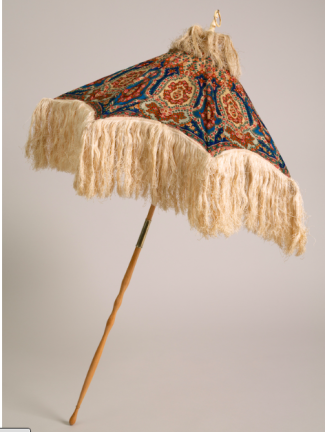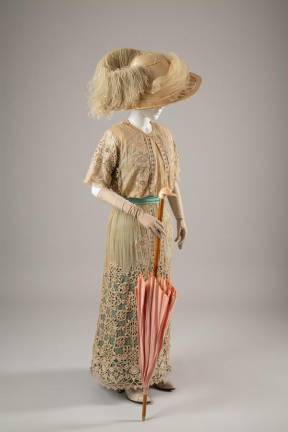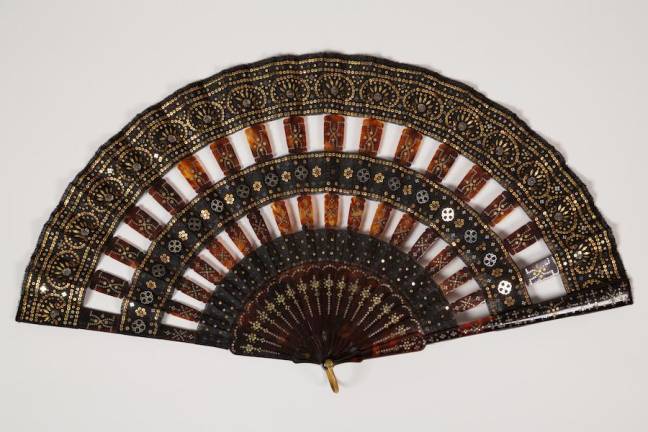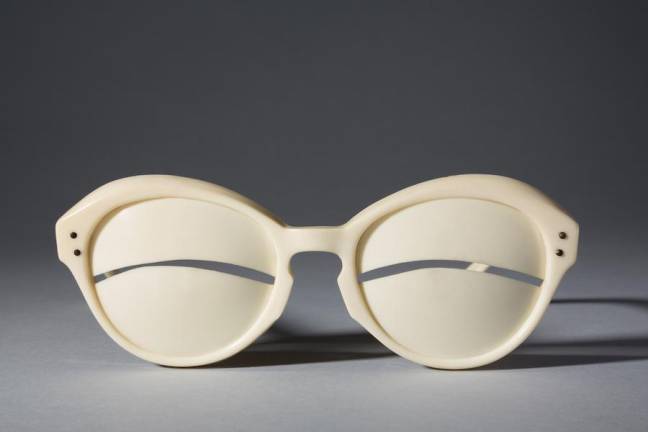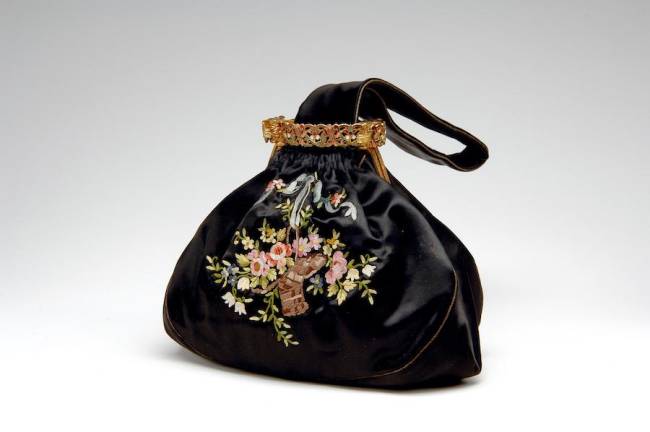They say “clothes make the man,” but the “Head to Toe” show at the Museum at the Fashion Institute of Technology says clothes make the woman ... and the society. “Head to Toe” explores the history of Euro-American women’s fashion and society from the early 19th century to today, as told by accessories. Until May 8, visitors can browse through more than two centuries of fashion to see how minor items reveal subtle but significant messages about women and class, race, sexuality, independence and society. The exhibition curators, Melissa Marra-Alvarez and Elizabeth Way, have done a wonderful job showing how and why accessories always complete a look.
The Medium is the Message ... Even in a Fan
With some 30 items of clothing and at least 200 accessories from MFIT’s permanent there’s a lot to take in. Hats and fans, shawls, shoes and gloves, full dresses, coats, and handbags – it’s a clothes horse’s delight. Informational panels at each step give visitors context and subtext and chronicles the changing tastes and status symbols that defined fashion and women’s place in the world.
The Opening
The show opens with a display of items to illustrate the point. Sunglasses from the 20th century sit beside a tiny 19th century parasol; both items designed mystery and privacy. Today’s blingy smartphone case, like the vanity cases of the 19th century, flaunt the owner’s modernity and status. The exhibit’s collection seems quaint to us now but were once an essential part of a well-dressed woman’s ensemble.
Gloves, for instance, were only incidentally for warmth (they used fur muffs for that). No respectable 19th century lady ventured out without them. Delicate, soft white hands indicated class and luxury and gloves kept them so, from simple short kidskin to opulent opera length silk gloves that reached the shoulder.
Shawls also provided more than simple warmth. Napoleon’s return from Egypt ignited a fad for cashmere shawls that became a frenzy by 1848: Cashmere Fever. Cashmere shawls hinted of the foreign, exotic and sexy, colonialism and empire (Empress Josephine had several) – and a token of wealth, class status and respectability. (Men gave them to their wives, who handed them down to daughters as a wedding gift.) In Balzac’s “Cousin Bette,” a cashmere shawl is a plot element that helps drive Bette in her schemes.
Parasols were built for ornament, not rain. Tiny, elaborately embroidered brollies were a powerful prop – a device for flirting and mystery, for privacy from the male gaze, for status, and to protect the wearer from the sun ... and thus preserve her delicate and prized white skin.
Fans were indispensible at parties and balls, to flirt, to add an air of mystery and for theatrical effect with orchestrated gestures. (Just watch any decent costume drama set in the 19th century.) They also displayed wealth, such as the fan by the Parisian fan-maker Duvelleroy, with incredible craftsmanship and expense.
Handbags, which we take for granted today evolved from tiny, decorated reticules so women could carry small personal items. (Slimmer dresses didn’t have pockets.) Women’s new ability to carry small personal items freely as they went about their business was considered by some to be a bold and vulgar spectacle, but it was a token of women’s growing independence.
Manufacturing and Class
Entering the 20th century, growing manufacturing capability meant increased wealth for families – and allowed less wealthy women to buy accessories once meant only for the rich. To help middle class women navigate the treacherous channels between displays of status and vulgarity, etiquette books sprang up. “Mrs. Beeton’s Book of Household Management” advised women that “a lady paying a call should not remove her shawl or her bonnet because this would imply she intended to stay longer than was considered polite.’’ Other books said wearing jewelry in the morning was “unspeakable.” The consumer revolution drove middle-class demand for aspirational luxury accessories; a display case shows a late nineteenth century mink fur muff, ivory-handled walking sticks, a silver calling card case and silk stockings. What would Mrs. Beeton Say?
The Modern Era
A worldwide depression and two world wars ended the fizzy exuberance in fashion and accessories. Extravagance was distasteful, even unpatriotic; austere lines and minimal accessories (there’s a war on!) took a woman from day to evening. Patriotic red white and blue leather pumps and a fun turban style hat by Lilly Daché show how accessories at this time helped enliven plainer dress. The postwar years revived femininity and Parisian couture houses took the world by storm – also from head to toe. After the war years, in the 60s, 70s and beyond, the clothes and the accessories look like something you’d find in a vintage shop, or even your – or your mom’s – closet.
Somehow that seems to take a bit of the air out of the show. Visitors are far enough away from the early 19th to mid 20th century to appraise the hidden messages in the collections. It takes more distance to deconstruct your own closet. I bought platform shoes because they were cool and fun; I wasn’t making a statement about anything but my willingness to risk a turned ankle.
Still, it’s fun to walk through the modern era and see the clothes you wore and saw on the street in a museum show: Fringed vests, Capezio flats, embroidered hippie boots, the sci-fi plastic minidresses favored by models like Twiggy during the “British Invasion.” Remember Judith Leiber purses and Elsa Peretti jewelry – essential accessories for a night at Studio 54?
You don’t have to be a fashionista to enjoy a walk through time told in shoes and purses, hats and shawls. You may just look at your own closet a bit differently.
“Head to Toe” is curated by Melissa Marra-Alvarez, curator, Education and Research; and Elizabeth Way, associate curator, Costume. It is on view through May 8, 2022.
